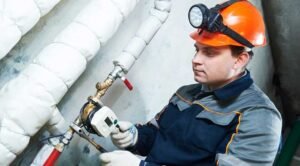Industrial environments rely heavily on clean, controlled air to support safe operations, protect employees, and maintain product quality. Over time, however, even the most reliable systems can begin to show signs of inefficiency or decline. Recognizing when it’s time to update or replace an industrial air purification system is essential for maintaining compliance and preventing avoidable risks.
Many facilities wait until air quality issues become overwhelming before taking action, but early detection can significantly reduce downtime and long-term costs. Here are some of the most common indications that your purification system may no longer be meeting the demands of your facility.
Contents
1. Declining Indoor Air Quality
One of the clearest signs of an outdated or underperforming system is a noticeable drop in air quality. This might include increased dust accumulation, lingering fumes, or unpleasant odors throughout the work environment. When contaminants aren’t effectively removed, the entire building is impacted, contributing to health concerns and potential violations of safety standards.
If workers report irritation, headaches, or breathing discomfort more frequently, it’s worth evaluating whether the current purification system is still functioning as intended.
2. More Frequent Filter Replacements
Filters naturally degrade over time, but when a facility begins replacing them far more often than expected, it may signal a larger issue. Excessive clogging indicates that the existing filtration technology can no longer handle the volume or type of particulates being generated. This often happens when operations expand or change, and the system is not updated to match new airflow and contaminant requirements.
Upgrading to a modern industrial air purification system with higher-capacity filtration can help maintain steady performance without constant maintenance interruptions.
3. Increased Energy Consumption
Older purification systems tend to draw more energy due to worn components, inefficient motors, or restricted airflow. If your utility bills have been steadily rising without a clear operational explanation, the purification equipment may be working harder than it should. Overworked systems also tend to wear out faster, leading to more frequent repairs and unexpected downtime.
A system evaluation can determine whether newer, more efficient technologies would reduce energy usage and improve long-term operating stability.
4. Changes in Production, Materials, or Processes
When a facility updates its manufacturing processes, introduces new machinery, or increases production rates, the original air purification setup may no longer be adequate. Different materials and processes release different types of airborne contaminants, some of which require specialized filtration or capture methods.
If production has evolved but the air purification system hasn’t, the mismatch can create higher levels of particulate matter, fumes, or chemical vapors than the equipment was designed to handle.
5. Difficulty Maintaining Compliance
Regulatory compliance is an ongoing responsibility for industrial facilities. If inspections start resulting in warnings, higher dust readings, or near-miss violations, it’s usually a symptom of an outdated system. Modern industrial air purification systems are designed to meet increasingly strict safety standards, making an upgrade a practical way to align with OSHA, EPA, and NFPA requirements.
6. Aging or Obsolete Equipment
Industrial air purification systems aren’t designed to last forever. As equipment ages, parts become harder to source, performance diminishes, and unexpected failures become more frequent. Outdated technology may lack the filtration efficiency or airflow capacity required for today’s work environments.
If your system is more than a decade old, a professional assessment can help determine whether a replacement or major upgrade is the most cost-effective path forward.








